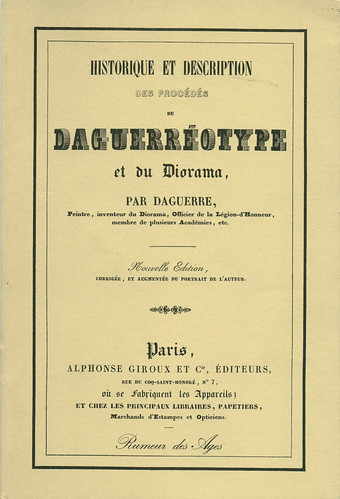Alphonse Giroux

|
| Daguerréotype (France, 1839, réédition 1982) Alphonse Giroux, Editeurs image by Gilles Péris y Saborit (Image rights) |
Alphonse Giroux made the first series production of a photographic camera.
He was a relative of Louis Jacques Mandé Daguerre who had improved the photographic methods of Joseph Nicéphore Niépce and his son Isidore Niépce by finding a new basic material, i.e. iodized polished silver-plated copper-plates, a new developing method with mercury vapour, and as fixing method a hot salt water bath. Since that was a total redesign of Niepce's method Isodore Niépce accepted a treaty that the invention should be named after Daguerre. The French government bought it from them. A law given by the French Parliament said that the invention should be given to the world for free.
Daguerre himself designed a solid wooden camera with achromatic lens. Giroux constructed it an made a series of that camera. Maybe he worked together with optician Bianchi whose sliding box camera was almost similar to Giroux's Le Daguerreotype, except the seal of Daguerre which was only on the Giroux cameras. The cameras were sold internationally.
cameras
Le Daguerreotype (1839)
address
- Alph. Giroux et Cie.
- Rue du Coq St Honoré, No. 7
- Paris
Links
- Original Giroux Daguerréotype Camera at Novacon
- Le Daguerreotype - original camera in the "Deutsches Museum Digital" Munich (German/English)